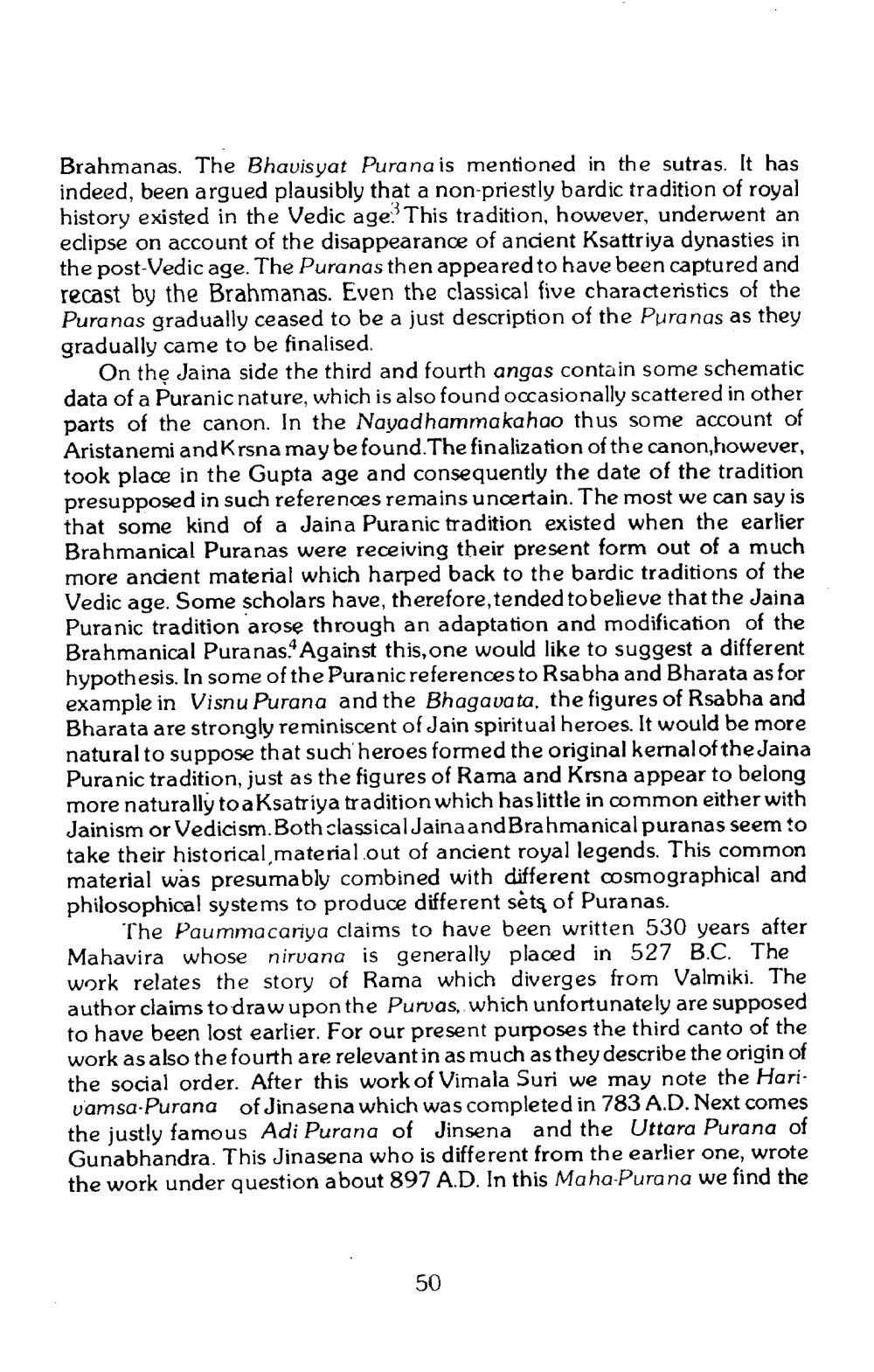________________
Brahmanas. The Bhavisyat Purana is mentioned in the sutras. It has indeed, been argued plausibly that a non-priestly bardic tradition of royal history existed in the Vedic age. This tradition, however, underwent an eclipse on account of the disappearance of ancient Ksattriya dynasties in the post-Vedic age. The Puranas then appeared to have been captured and recast by the Brahmanas. Even the classical five characteristics of the Puranas gradually ceased to be a just description of the Puranas as they gradually came to be finalised.
On the Jaina side the third and fourth angas contain some schematic data of a Puranic nature, which is also found occasionally scattered in other parts of the canon. In the Nayadhammakahao thus some account of Aristanemi and Krsna may be found. The finalization of the canon, however, took place in the Gupta age and consequently the date of the tradition presupposed in such references remains uncertain. The most we can say is that some kind of a Jaina Puranic tradition existed when the earlier Brahmanical Puranas were receiving their present form out of a much more ancient material which harped back to the bardic traditions of the Vedic age. Some scholars have, therefore,tended tobelieve that the Jaina Puranic tradition arose through an adaptation and modification of the Brahmanical Puranas. Against this, one would like to suggest a different hypothesis. In some of the Puranic references to Rsabha and Bharata as for example in Visnu Purana and the Bhagavata, the figures of Rsabha and Bharata are strongly reminiscent of Jain spiritual heroes. It would be more naturalto suppose that such heroes formed the original kernalof the Jaina Puranic tradition, just as the figures of Rama and Krsna appear to more naturally toa Ksatriya tradition which has little in common either with Jainism or Vedicism.Both classicalJainaandBrahmanical puranas seem to take their historical material out of ancient royal legends. This common material was presumably combined with different cosmographical and philosophical systems to produce different sets of Puranas.
The Paummacariya claims to have been written 530 years after Mahavira whose nirvana is generally placed in 527 B.C. The work relates the story of Rama which diverges from Valmiki. The author claims to draw upon the Purvas, which unfortunately are supposed to have been lost earlier. For our present purposes the third canto of the work as also the fourth are relevant in as much as they describet the social order. After this work of Vimala Suri we may note the Harivamsa Purana of Jinasena which was completed in 783 A.D. Next comes the justly famous Adi Purana of Jinsena and the Uttara Purana of Gunabhandra. This Jinasena who is different from the earlier one, wrote the work under question about 897 A.D. In this Maha-Purana we find the
50




